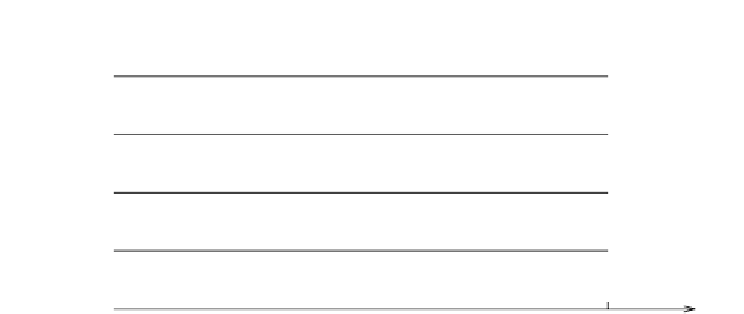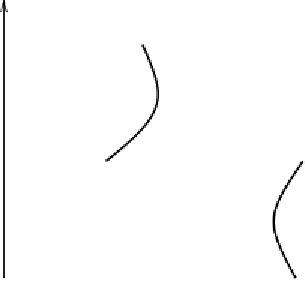Digital Signal Processing Reference
In-Depth Information
Frame
τ
2
future 2
τ
1
future 1
τ
0
τ
0
current
τ
−1
previous 1
τ
−2
previous 2
Pitch
τ
min
τ
max
Figure 6.19
A two trace-tracking scheme
where
α
is chosen according to the short-time analysis (frame duration) or
path step. Since the frame duration is equivalent to the interval between
two consecutive pitch analysis blocks, as the frame gets larger, the next
pitch could be expected to have more deviation. According to the data by
Sundberg [26], the maximum rate of change of fundamental frequency is in
the order of 1 %/ms. For a 20 ms frame size, the maximum frequency change
would be 20 % which corresponds to a pitch range from 0
.
8
ω
0
to 1
.
2
ω
0
.Inthe
time domain, the corresponding range is 0
.
8
τ
0
to 1
.
2
τ
0
, approximately, with
α
0
.
2.
In order to take into account the effects of both continuous pitch and
changing pitch, two pitch paths should be considered (see Figure 6.19). One
traces the pitch from previous frames to the current frame, and the other
traces the pitch from the current frame to incoming or future frames that
forecast a new pitch trace. If the future path penalty is less, it is assumed that
a new pitch trace is starting; if the path penalty with the previous frames is
smaller, then the existing pitch is assumed to continue into the current frame.
Since future pitch tracking requires the storage of the future frames, extra
delay is unavoidable. The pitch-tracking procedure using three frames can be
described as follows:
=
•
Forward Tracker
1. For each candidate pitch
(τ
0
)
in the current frame, find
E
0
(τ
0
)
.
2. Find the joint minimum
E
1
(τ
1
)
+
E
2
(τ
2
)
under the constraints of equation
(6.36).
3. Add
E
0
(τ
0
)
to the corresponding minimum
E
1
(τ
1
)
+
E
2
(τ
2
)
to form each
candidate's accumulated forward path error.
4. Search for the minimum accumulated error and find the forward pitch.




Search WWH ::

Custom Search